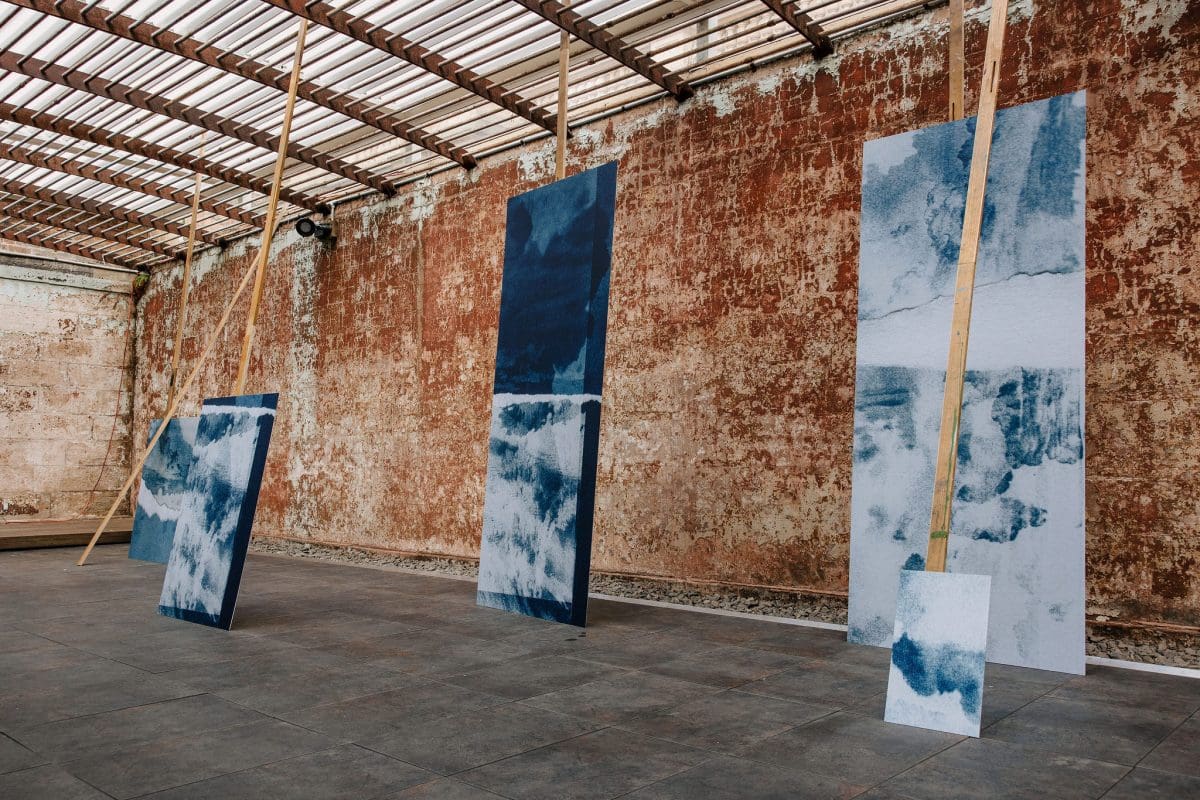
Place-driven Practice
Running for just two weeks across various locations in greater Walyalup, the Fremantle Biennale: Sanctuary, seeks to invite artists and audiences to engage with the built, natural and historic environment of the region.




The slow art movement, labelled as such, feels like something that has only gained traction in relatively recent times. It is perhaps an inevitable reaction to the acceleration at the heart of life for many of us, brought about by the nature of technology and communications, as well as a pervasive and blinkered obsession with productivity, delivered to us by late capitalism.
But while it may be true that Radical Slowness fits neatly into the contemporary canon of slow art, for its curators, the philosophy behind the exhibition extends far back into history.
“The idea of ‘cathedral thinking’ was really important for us in framing the exhibition, and ‘making strange’ our assumptions about time,” says Anna May Kirk, who curated the show in partnership with Tai Mitsuji. “Cathedral thinking refers to the process of building something that will take more than a single lifetime to complete. It suggests that even if you or I build a cathedral, it will be our grandchildren, or even their grandchildren, who finish it. This was the reality for the Renaissance architect or the Medieval mason, yet it seems to have been lost today … We don’t build cathedrals anymore.”
The six artists in Radical Slowness explore the idea of ‘slow time’ via a number of innovative conceptual approaches, and through various mediums and media. They are: Akil Ahamat, Emma Fielden, Dean Cross, Izabela Pluta, Aude Parichot and Tané Andrews.

Slow art can be regarded as artworks that intentionally invite contemplative, patient and committed attentiveness on the part of the viewer. As the author Arden Reed put it in his 2017 book, Slow Art: The Experience of Looking, Sacred Images to James Turrell, it’s “the dynamic, intimate encounter between object and observer.” Slow art is designed to literally slow down the viewer’s perception—thus creating slow time.
“Slow time is one of those concepts which resists codification,” says Mitsuji. “It’s elusive, but that’s its beauty. It has no set duration. In a gallery, it can be something as simple as taking an extra few minutes, or even seconds, to sit with the detail of a work, to be in that space, to truly absorb it.”
In exploring slowness, several Radical Slowness artists turn to processes and transformations from the natural world. Ahamat’s video work, Dawn of a Day Too Dark to Call Tomorrow, 2021, “presents a shifting cyclical dialogue between the artist and a snail”, as Mitsuji describes it. In contrast, Fielden’s video performance, Andromeda and the Milky Way, 2021, examines ‘time’ on a cosmic, perhaps ungraspable scale. Andrews’s piece, We Carry This Weight Together, 2021, toys with the process of a rock’s erosion by water (and our perception of it).
Cross’s work, The First Second, 2019, features an alarm clock that is ‘stuck’ between midnight and 12:01am. Mitsuji says: “The blinking red display transforms the brief minute into an extended moment, prompting us to experience time almost as a tangible form, rather than a floating idea.”

Pluta’s sculpture work, meanwhile, employs the remarkable space that is The Lock-Up itself, a former police station that dates from the 1800s. Her Ascending Air, Unfolding Motion, 2022, utilises both the inside and outside spaces at The Lock-Up. Indeed, the gallery space plays its own role in emphasising slow time. “Walking inside The Lock-Up, you can’t help but confront the idea of time,” says Mitsuji. “It is written into the patina that covers every inch of the walls. It’s the perfect place to stage an exhibition like this.”
The other central element to the exhibition is its political component (as suggested by the title)—the notion that slowness can become almost a mode of resistance against what Mitsuji describes as “how fast and frictionless our scrolling existence has become.”
“In a world that is constantly demanding that we move faster, think quicker, and produce at an ever-increasing rate,” he adds, “what could be more radical than slowing down? There is a political force to slowness. And more than that, an ineffable importance to stepping out of our stream of our everyday.”
Radical Slowness
The Lock-Up
27 March—15 May